Pasture is the most efficient, effective and economic source of feed for all grazing-based livestock enterprises; growing more of it at the right times of the year can create opportunities for livestock producers to increase stocking rates, joining weights, livestock growth rates and reduce reliance on supplementary feeding. The focus for leading livestock producers is to efficiently establish and manage their pastures sustainably for optimal livestock performance.
The quantity and quality of pasture available for grazing or fodder conservation underpins strategic decisions such as time of joining, time of lambing/calving, flock/herd structure, stocking rates and delivery of livestock into target markets. As the dairy, beef and sheep livestock industries emerge from periodic droughts, there is increased recognition by livestock producers, their advisors and supply chain participants of the need to re-establish a quality feedbase either to support livestock production or to act as a break within crop rotations.
In recent years, the number of pasture species and pasture seed products commercially available to pasture seed suppliers and livestock producers in Australia has increased significantly. Reasons for this include:
i) the availability of an increasing range of ‘new’ pasture and forage species with nutritional and biomass production profiles which compliment that of traditional pasture species;
ii) the introduction and integration of innovations such as disease and pest tolerance, pasture endophytes, marker assisted cultivar selection and hybridization;
iii) increased breeding activity in the development and supply of traditional proprietary pasture seed products, especially as a result of the transition from public sector breeding to private sector breeding programs; and
iv) an increasing trend to introducing new pasture species and pasture seed products derived from countries with similar agro-ecological pasture growing conditions to that in Australia.
As a result of these trends livestock producers, their advisors and pasture seed suppliers are seeking information relating not only to an individual pasture seed products adaptation and performance, but also to the intellectual property, marketing and varietal status of the various pasture seed products available on the market.
In recognition of the increasing demand to provide this information, the Australian Seed Federation (ASF) Plant Breeders & Marketers Group identified the opportunity to collate and present information from its members in a structured and easily accessible pasture seed product database.
The Australian Seed Federation Pasture Seed Product data base lists pasture seed products by species and identifies the intellectual property, marketing and varietal status of the various pasture seed products nominated by their Australian marketer.
The ASF Pasture Seed Product database covers the full range of pasture seed products available from pasture seed suppliers which are adapted to the agro-ecologically diverse pasture and livestock markets of Australia. The pasture seed products listed in the database include annual and perennial pasture grasses, legumes, forage and fodder crops and some herbs used within pastures.
ASF Pasture Seed Product Database Structure
1.1 Agronomic Selection Criteria
Pastures may consist of a single species (e.g. lucerne) or more often a mixture of grasses and legumes. Mixtures are often preferred for a number of reasons — production benefits, weed control, erosion control, diversity in relation to pest control, etc. When considering which pasture species to select livestock producers and their advisors need to identify pasture species with agronomic characteristics which align with the livestock producer’s climate, soils, production system and management. Agronomic characteristics include whether the pasture species is an annual or perennial, ploidy, time to flowering/maturity, drought tolerance or animal health issues etc. The priority which is placed on these agronomic characteristics by plant breeders and livestock producers may vary within and between species. Hence understanding the genetic purity of a pasture seed product is important when comparing the various options available.
1.2. Species of Interest Options
The brand name is quite often used interchangeably with “brand”, although it is more correctly used to specifically denote written or spoken linguistic elements of any product. In this context a “brand name” constitutes a type of trademark, if the brand name exclusively identifies the brand owner as the commercial source of products or services. A brand owner may seek to protect proprietary rights in relation to a brand name through trademark registration. A “brand” name does not of itself qualify the pasture seed product as a ‘Variety’ or that it is unique or different to any other pasture seed product within the same pasture species.
Brand names are listed together with supplier details so that it may assist in seeking further information about pasture seed product performance and availability.
A variety is an assemblage of cultivated individuals that is distinguished by any character (morphological, physiological, cytological, chemical or other) significant for the purpose of agriculture, forestry, or horticulture and which, when reproduced (sexually or asexually), retains its distinguishing features.
Therefore, implicit in the definition of “Variety” is a substantiated capacity to deliver consistently to the market the described genetic characteristics of the branded pasture seed product.
‘Variety Confirmation’ confirms that following due independent verification by ASF a branded pasture seed product of a species qualifies for the use of the term “Variety” by way of meeting one or more of the definitions for a “Variety” as nominated by UPOV (http://www.upov ), OECD (http://www.oecd.org ) or PBR (http://pericles.ipaustralia.gov.au).
1.3. Intellectual Property Status
Plant Breeder’s Rights are exclusive commercial rights to a registered variety for a limited period of time. The rights are a form of intellectual property, like patents and copyright, and are administered by IP Australia under the Plant Breeder’s Rights Act 1994 (the Act). In relation to propagating material of the registered variety, PBR holders for a pasture seed product have exclusive rights to:
a) produce or reproduce the material;
b) condition the material for the purpose of propagation (conditioning includes cleaning, coating, sorting, packaging and grading);
c) offer the material for sale;
d) sell the material;
e) import the material;
f) export the material; and
g) stock the material for any of the purposes described in (a) to (f).
PBR protection is normally valid for up to 20 years and under registration. Purchase of a PBR protected seed variety means that for individual farmers there are restrictions as described above.
The major restriction to those who purchase seed of a PBR protected pasture seed product is that the current seed or the produce of subsequent harvests cannot be sold as seed for sowing, without permission from the breeder or his agent.
This restriction includes seed sale and trading between farmers. There are however exemptions to these restrictions. Firstly seed may be held over on farm for own use.
A Trade Mark is used to distinguish the goods and services of one trader from those of another and provides protection against misrepresentation under the trade practices or fair trading legislation.
A Trade Mark is a right that is granted for a letter, number, word, phrase, sound, smell, shape, logo, picture and/or aspect of packaging. The symbol ™ can be used with a trade mark at any time but does not necessarily carry any intellectual property right unless registered as a Trade Mark.
It is not necessary to register a trade mark to obtain some potential rights to it. Trade Marks that are not registered may be protected under the common law and enforced using the provisions of the Competition and Consumer Act 2010 and other state based fair trading legislation.
A Registered Trade Mark® is legally enforceable and gives you exclusive rights to commercially use, licence or sell it for the goods and services that it is registered under. The symbol ® is used for registered Trade Marks. If a Trade Mark is registered overseas but not in Australia, it can also use the symbol however the Trade Mark holder will need to show the country of registration close to it.
1.4. Production, Marketing and Quality Assurance Status
AOSCA has been established to promote and facilitate the movement of seed or plant products in local, national, and international markets through the coordinated efforts of official seed certification agencies acting to evaluate, document, and verify that a seed or plant product meets certain accepted standards.
The purpose of the AOSCA certification system is to determine if new crop/pasture varieties meet the eligibility requirements of the AOSCA genetic seed certification standards. The Boards accomplish this by providing a central, standardized, and nonbiased procedure followed by all plant breeders submitting review applications to AOSCA.
The OECD Schemes for the Varietal Certification of Seed Moving in International Trade promote the use of agriculture seed of consistent genetic quality. Certified seeds are produced – and officially controlled – according to common harmonised procedures in 58 participating countries.
The OECD certification is applied to varieties satisfying Distinction, Uniformity and Stability conditions, having an agronomic value, and published in official lists. The annual List of Varieties eligible for OECD Certification includes about 43 000 varieties from 200 species.
The Schemes deal with the following groups of species: Grasses and Legumes, Crucifers and other Oil or Fibre species, Cereals, Maize and Sorghum, Beet, Subterranean clover, Vegetables. The technical requirements are comprised in the Rules and Directions. All Schemes aim at seed certification (the Vegetable Scheme provides also for “Standard Seed” which are not certified but only controlled).
The Schemes ensure the varietal identity and purity of the seed through appropriate requirements and controls throughout the cropping, seed processing and labelling operations. Ex: Generation control (Pre-basic, Basic and Certified seed), isolation distances, purity standards, field inspections, lot sampling, post-control plots, compulsory official laboratory analysis for each certified seed lot.
The OECD certification provides for official recognition of “quality-guaranteed” seed, thus facilitating international trade and contributing to the removal of technical trade barriers.
The certification rules and the certification process governed by the Australian Seed Authority (ASA) are designed to ensure that the buyer of seed of that variety actually obtains crop or pasture planting seed with the valuable characteristics selected by the breeder. Within Australia registration of a variety from ASA may be sought for eligibility for certification within Australian only, or for certification under the OECD scheme for export. Conversely, a number of current varieties marketed within Australia may not have registration with ASA, but may have registration for OECD certification within another country.
The rules of the Australian scheme are the same as for the equivalent OECD seed scheme, with the following exceptions to the requirement for post-control testing:
The other significant difference is that different labels must be used.
The Australian seed industry has requested ASA to also impose standards for the germination and physical purity of certified seed, in order to ensure that buyers do not buy seed which may not be able to establish plants through lack of germination, or which may contain excessive or unwanted weed seeds. All seed certified in Australia, under either the OECD Seed Schemes or the Australian Seed Certification Scheme must meet these standards.
1. 5. Background Information
The names of Australian Marketers of pasture seed products within the ASF Pasture Seed Product database are provided based on the information provided by the licensee or owner of the pasture seed product in question and are intended as a source of further information.
While the majority of pasture seed products nominated in the ASF Pasture Seed Product database have been bred and developed domestically, there is a range of pasture seed products which have been directly imported and marketed in Australia, The names of the originating plant breeding organization have been provided so that the originating source of the relevant pasture seed products can be identified by users of the ASF Pasture Seed Product database.
DISCLAIMER
The purpose of the Australian Seed Federation (ASF) Pasture Seed Product database is only to raise awareness of participants within the seed industry to the intellectual property, marketing and varietal status of the pasture seed products listed in the database.
The pasture seed product brand names and marketer trade names in this database are supplied on the understanding that no preference between equivalent pasture seed products or marketers is intended and that the inclusion of a pasture seed product or marketer does not imply endorsement by the ASF over any other equivalent branded product or marketer from another marketer.
Recognising that information in the ASF Pasture Seed Product database is provided by third parties, the ASF, the author and the website providers take no responsibility for the accuracy, currency, reliability and correctness of any information included in the database as it has been provided by third parties.
The (ASF) makes no warranty or representation that the Pasture Seed Product database is accurate, complete, reliable or up to date. Before adopting any idea or pasture seed product referred to in this database industry participants must for their own protection obtain advice from experts qualified to advise in the fields relevant to them. The Australian Seed Federation has no liability for loss or damage direct or consequential which may be incurred whilst relying on the whole or any part of this document.
The ASF apologise for omitting the name of any pasture seed product or marketer from this database. Please advise the Australian Seed Federation, so that inclusion can be considered for the next edition.
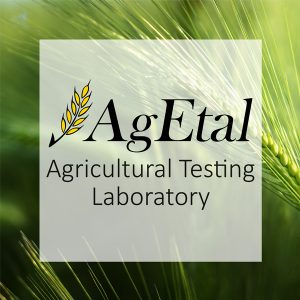
AgEtal Pty. Ltd. is a privately owned and independent agricultural testing laboratory based in the Darling Downs. We provide technical support and laboratory services Australia wide. We are able to provide a wide range of specialist agricultural testing services including seed and grain testing and seed pathology and molecular diagnostics. ...
Find out more
Aurora want to help Australian and New Zealand businesses better compete on the world stage. Their aim, to make it easy to implement packaging automation regardless of whether you are a small rural-based family business or a multi-national corporate. Aurora are paving the way for businesses to take advantage of everyday automation with confidence!...
Visit Site
Barenbrug is one of Australia’s leading seed businesses specialising in research and development, marketing, extension and distribution of proprietary pasture and forage seeds, cropping, turf and seed enhancement technology. Key products in our range include temperate and tropical pasture varieties, fodder crops, forage cereals, field crops and turf and amenity grasses. Barenbrug has a strong research and development focus with significant programs being conducted at our facilities near Howlong, New South Wales and Gatton, Queensland as well as additional regional sites across the country....
Visit Site
Centor Oceania is an independently owned business servicing the entire Asia Pacific with a wide range of seed applied and seed improvement technologies. Best known for our Seedworx™ and Ezicote™ film coating polymers, we also have a range of specialist analytical equipment and seed treatment machinery, though at the very heart of what we do is Research and Development. Our dedicated team of scientists work diligently to develop and strengthen what we offer, and importantly to create new and innovative ways to improve the finished products for our customers. While we may be part of a global group we enjoy working locally with our customers, utilising our fully equipped laboratory to find the best solutions to seed coating application issues. Explore our website for more information, better still get in touch with one of our team to discuss how we can help you....
Visit Site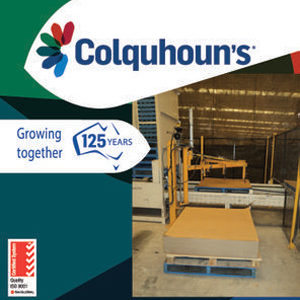
Colquhoun’s, established in 1888, is a proudly Australian, family-owned business specialising in premium packaging solutions for the seed and grain industry. With a national footprint and deep agricultural expertise, we deliver tailored products—from recyclable woven polypropylene sacks to custom-printed bulk bags and pallet protection—all designed to enhance supply chain efficiency and product integrity. Our sustainability focus includes solar-powered operations and innovative material development to support a circular economy. With a legacy of trust and a forward-looking strategy, Colquhoun’s partners closely with growers, processors, and exporters to ensure packaging is reliable, compliant, and aligned with the evolving needs of Australian agriculture. ...
Visit Site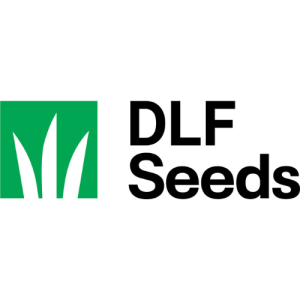
DLF Seeds (formed by combining PGG Wrightson Seeds, Stephen Pasture Seeds (SPS) and AusWest Seeds) is a proprietary seed company operating across Australia. Our activities cover all aspects of the seed market, from R&D through to product supply, distribution and technical on-farm support. DLF Seeds operates within the Australian market through the product portfolios of PGG Wrightson Seeds, AusWest and Stephen Pasture Seeds (including the Agricom pro duct range). These portfolios include varieties for both temperate and tropical forage markets. The operations cover research and development, plant breeding, seed multiplication, cleaning, seed treatment, mixing, marketing, sales and distribution. ...
Find out more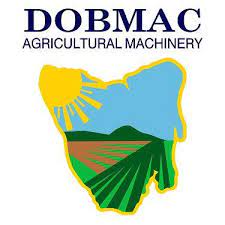
Dobmac Agricultural Machinery is an innovative, market leader in the design, manufacture, supply & maintenance of specialised agricultural machinery in a changing global market. Supplying specialised farm equipment and service throughout Australia, New Zealand and internationally, Dobmac can provide a solution for all your root crop vegetable needs. We specialise in the design, manufacture, supply and service of vegetable machinery throughout Australia. Dobmac's outstanding reputation has been built on over 40 years of award-winning experience and ingenuity....
Find out more
Enza Zaden develops new vegetable varieties that are grown, sold and consumed all over the world. So it’s very likely that you’ll often find our tomatoes, cucumbers, sweet peppers, lettuce or other vegetables developed by us on your plate. We produce and sell the seeds of those vegetables worldwide. Besides an international vegetable-breeding company, Enza Zaden is also an independent family business. For three generations, an entrepreneurial spirit, long-term vision and focus on innovation have characterised our company’s distinctive features and healthy growth. ...
Visit Site
Since our formation our focus has been on providing innovative turn-key solutions to the feed, food and seed industries, and we have become an industry leader through our commitment to excellence. Nick and Charles Smith, together with our highly skilled team, have the motivation and expertise to provide leading edge solutions to exceed the requirements of our customers. We are committed to proving unequalled design, quality and world leading technology solutions to meet the needs of our customers, no matter where located. Our focus is innovation, clever thinking and timely delivery to achieve the very best for our customers....
Visit Site
Polesy Packaging & Textiles has been a leading industry expert in packaging since 1950. Offering a full range of solutions that meet all types of product applications. Our packaging team has a breadth of experience and in-depth understanding of our customers day-to-day operations and requirements. This ensures we can provide packaging solutions that fully fit your operational and quality requirements. ...
Learn more
Premier Tech is committed to creating sustainable solutions that help improve the efficiency of manufacturing facilities in the nutrition, industrial, agricultural and organics market sectors. We offer a wide range of solutions, ranging from weighing, feeding, bagging, case packing, bulk handling all the way through palletizing and load securing....
Learn more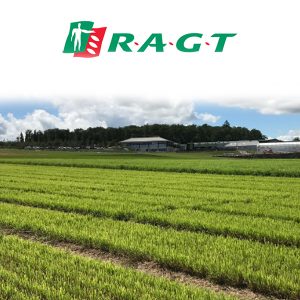
Global science. Proven local performance. Delivering the production demanded by Australia’s world-leading farm systems requires a significant investment in research, development and real world testing....
Learn more
We are Rijk Zwaan. A fruit and vegetable breeding company. Every day, millions of people eat fruit and vegetables grown from our seeds. Founded in Daylesford, Victoria, in 1987, Rijk Zwaan Australia (pronounced ‘rake zwarn’) employs approximately 80 staff, working across three primary areas; vegetable seed sales, research and development, and seed production. Working with growers, retailers and processing companies, we continually exchange ideas to drive the development of vegetables, product lines and concepts aligned to market needs. In addition, we closely collaborate with research institutes and universities. Rijk Zwaan is a family-owned international fruit and vegetable breeding company supplying seeds to growers in more than 100 countries....
Find out more
Satake Oceania are responsible for Satake Corporation’s Group activities in Australia, New Zealand and the Pacific Islands. Satake Oceania engineer tailored, specialised, and end to end solutions for bulk material handling, processing, and storage - from design to construction through to installation and ongoing service, right here in Australia. ...
Learn more